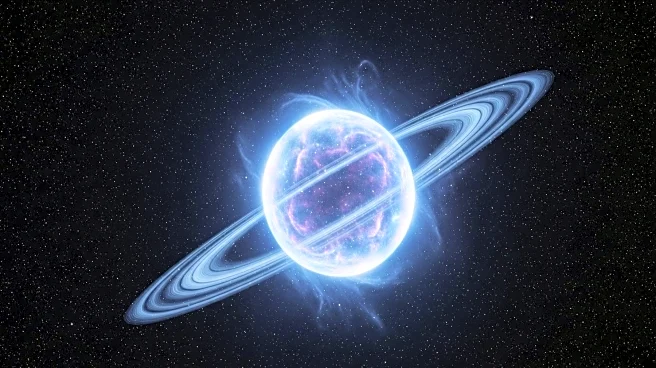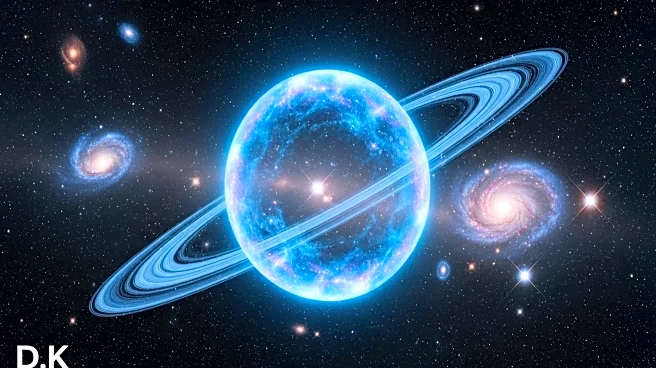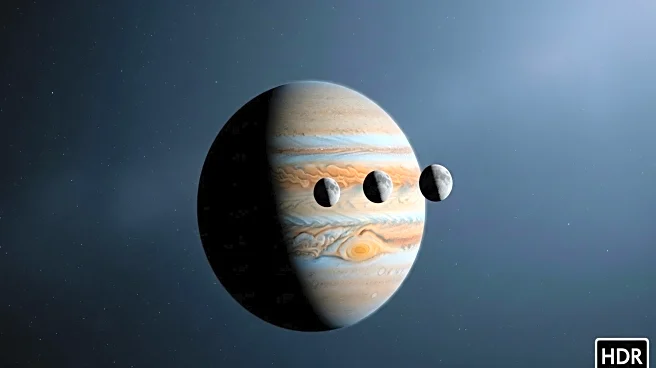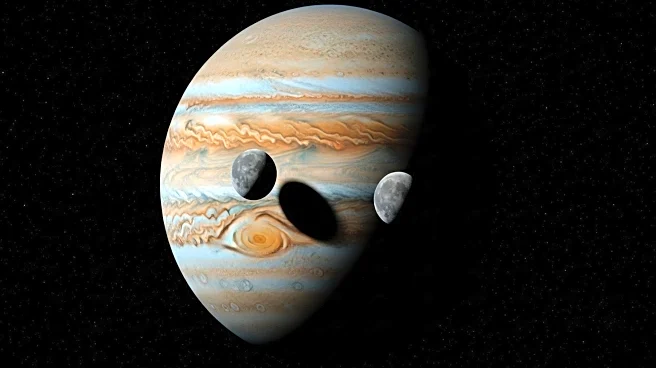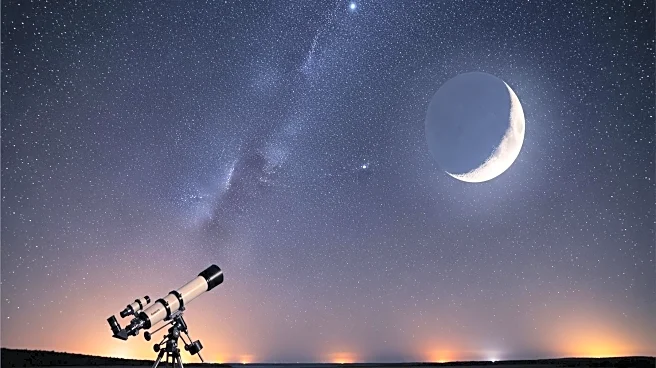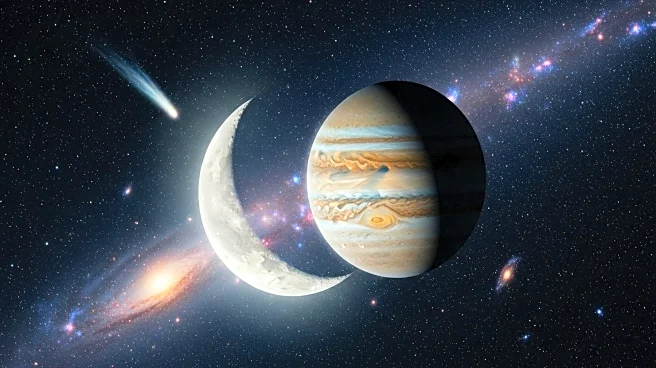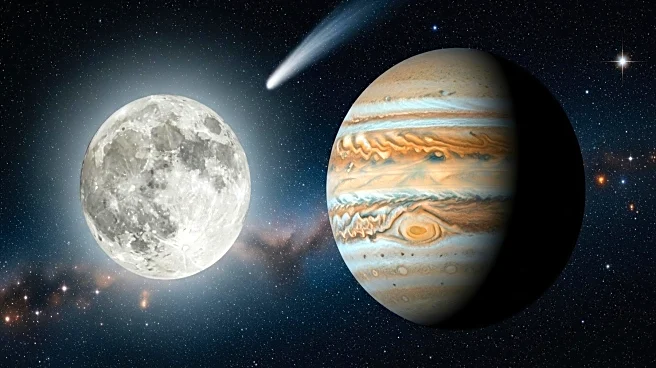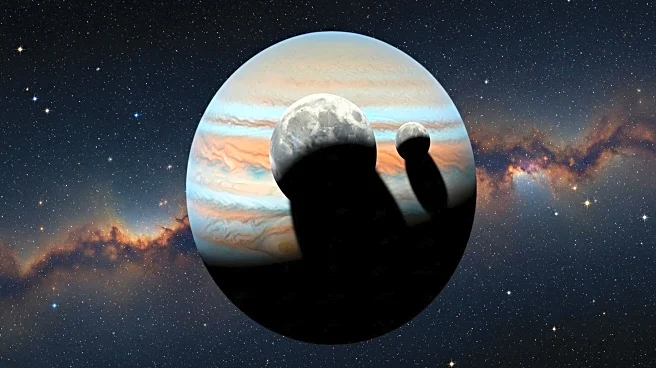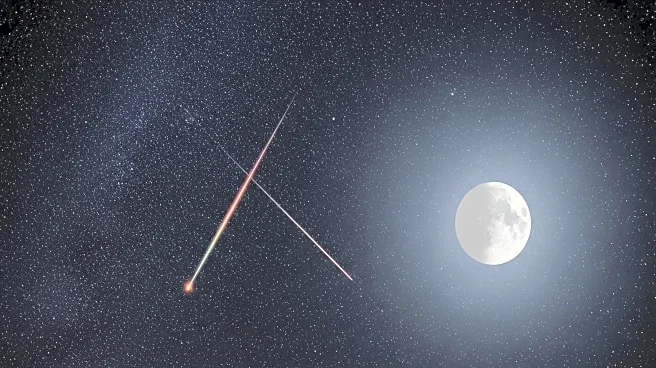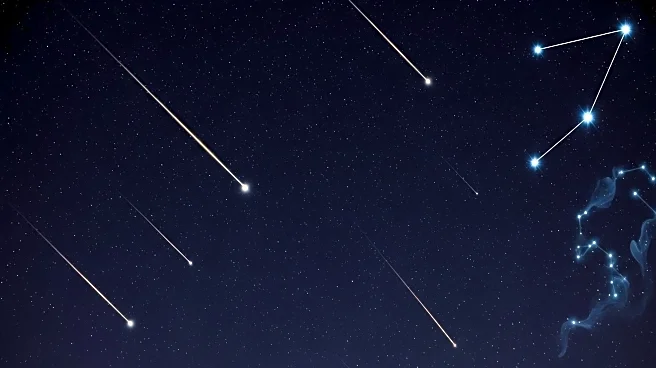What's Happening?
On October 12, 2025, astronomy enthusiasts are encouraged to observe the Saturn Nebula (NGC 7009), a planetary nebula located in western Aquarius. This nebula, resembling a ghostly version of the ringed planet Saturn, is best viewed around 8 to 9 P.M. local daylight time, benefiting from dark skies before the moonrise. The nebula glows at 8th magnitude and can be observed through a telescope, with larger scopes providing better views. The nebula's appearance is characterized by a spherical bubble and two projections, known as ansae, which contribute to its Saturn-like appearance. The central star within the nebula, shining at magnitude 11.5, is visible through a telescope. This celestial event coincides with the transit of Io and Europa across Jupiter, offering a rich observational experience for sky watchers.
Why It's Important?
The observation of the Saturn Nebula provides a unique opportunity for astronomers and enthusiasts to witness the beauty and complexity of planetary nebulae. These nebulae are formed from the material ejected by dying stars, offering insights into stellar evolution and the lifecycle of stars. The event highlights the importance of dark skies for astronomical observations, allowing for clearer views of celestial objects. Additionally, the simultaneous transit of Io and Europa across Jupiter adds to the significance of the night, showcasing the dynamic nature of our solar system. Such events foster public interest in astronomy and encourage educational activities related to space science.
What's Next?
As the Saturn Nebula continues to be a point of interest, astronomers may focus on studying its structure and the processes involved in its formation. Observatories and amateur astronomers might plan further observations to capture detailed images and data, contributing to ongoing research in planetary nebulae. Public outreach programs and educational initiatives could leverage this event to promote interest in astronomy, encouraging more people to engage with the night sky. Future celestial events, such as eclipses and transits, will continue to provide opportunities for observation and study, enriching our understanding of the universe.
Beyond the Headlines
The observation of the Saturn Nebula also touches on broader themes in astronomy, such as the role of planetary nebulae in enriching the interstellar medium with heavy elements. These elements are crucial for the formation of new stars and planets, highlighting the interconnectedness of cosmic processes. The event underscores the importance of preserving dark skies, as light pollution can significantly hinder astronomical observations. Efforts to reduce light pollution are essential for maintaining the quality of observations and supporting scientific research. Additionally, the cultural and aesthetic appreciation of celestial phenomena can inspire artistic expressions and deepen our connection to the cosmos.
